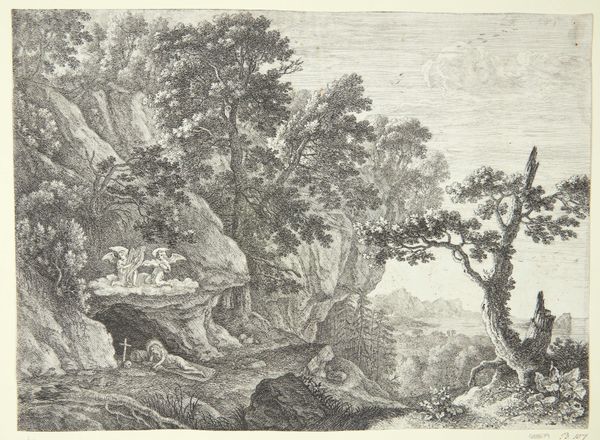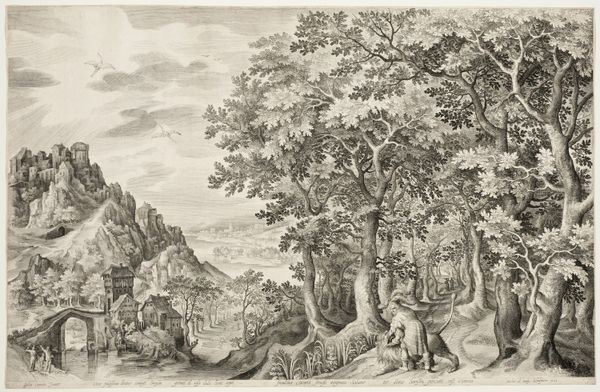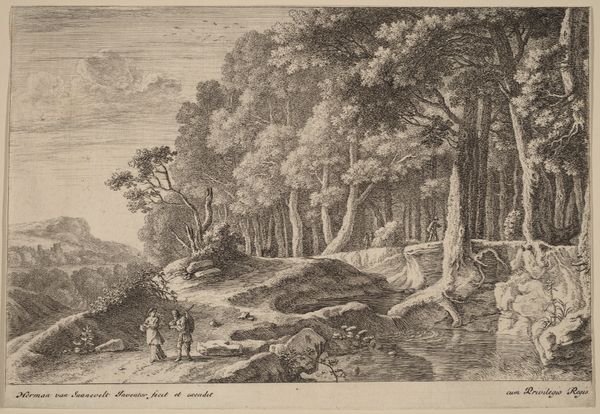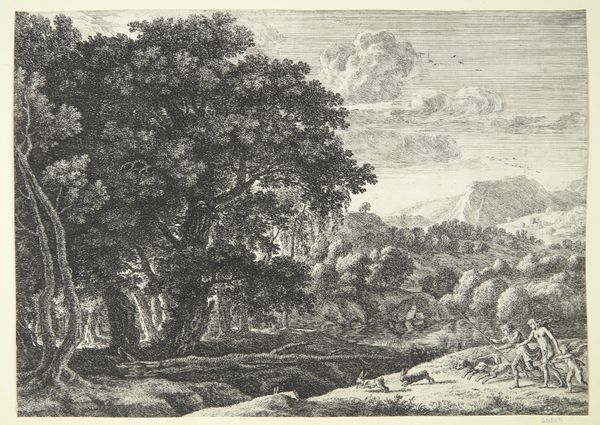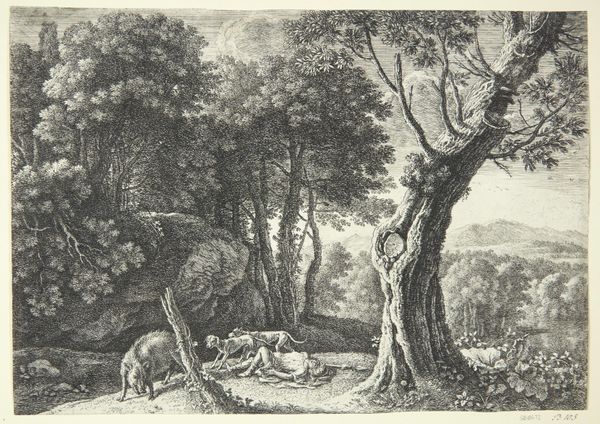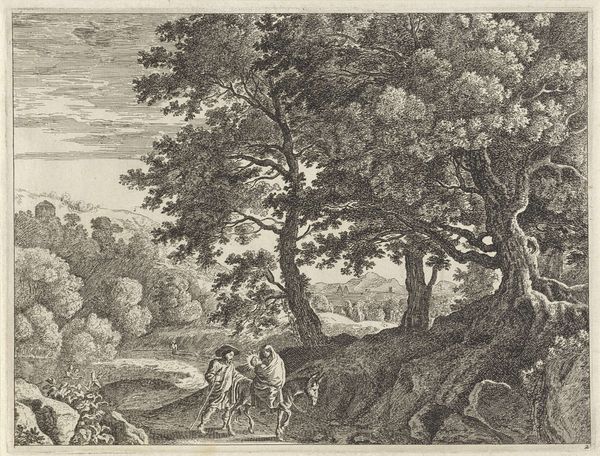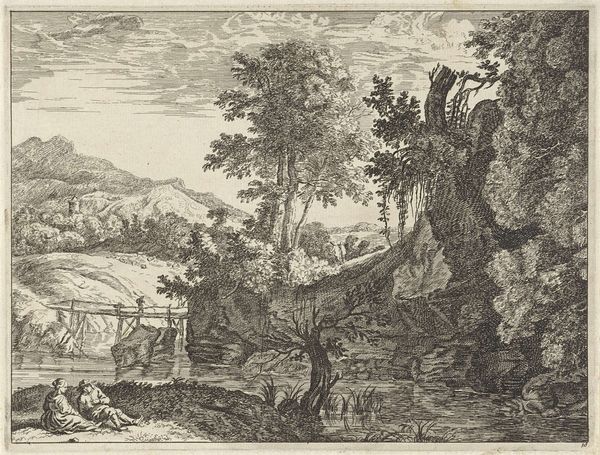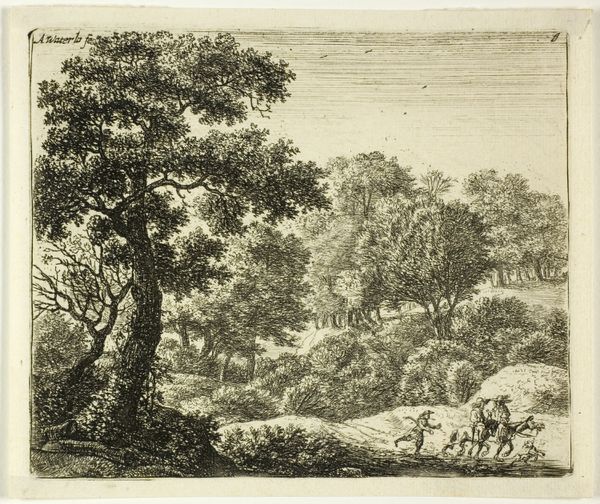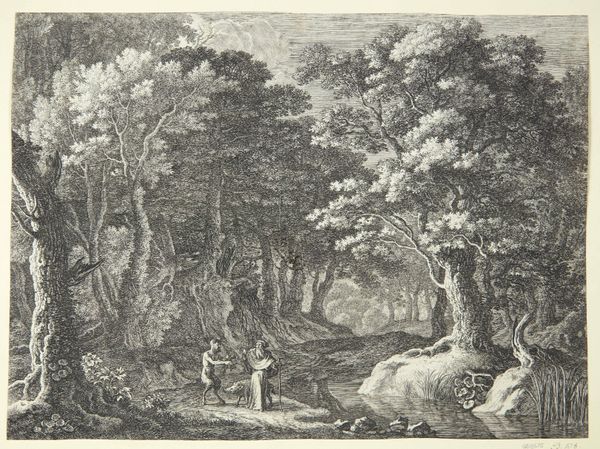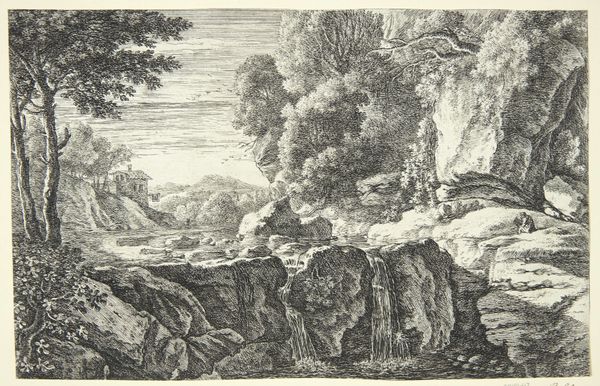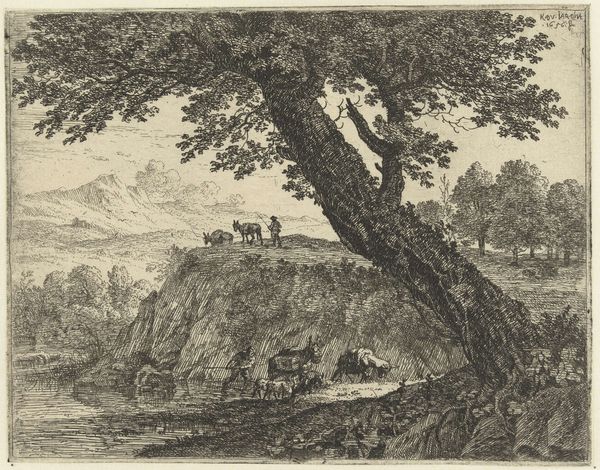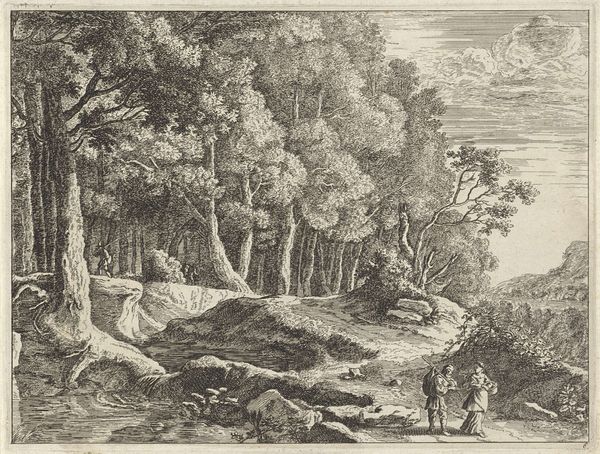
print, etching, engraving
#
dutch-golden-age
# print
#
etching
#
landscape
#
engraving
Dimensions: 190 mm (height) x 274 mm (width) (bladmaal)
Curator: Looking at "House on a Rock," an etching and engraving by Herman van Swanevelt, dating roughly between 1603 and 1655, currently residing here at the SMK, my eye is immediately drawn to how Swanevelt captured this monumental landscape. What are your initial impressions? Editor: The etching is so full of texture! There's a strong contrast between the roughness of the cliff face and the delicacy of the distant, misty mountains. How the artist has crafted a visual push and pull within the tonal arrangement feels compelling. Curator: Exactly! But let's also consider that landscapes during this period were rarely just about scenery; they were deeply embedded in contemporary sociopolitical realities. Editor: I can appreciate the broader socio-historical context, but there’s a fascinating structure in how Swanevelt utilizes line to create depth, don’t you agree? The details are amazing considering the constraints of etching. Curator: Absolutely. This connects directly to notions of property and control; who owns the land, who benefits from it, and who is excluded from it. The house, perched precariously, perhaps represents the vulnerability and the exclusivity of wealth, against the backdrop of exploited rural labor. Editor: I appreciate that the reading enriches the understanding of social hierarchy, but I still find it compelling how the artist employed a limited range of values to convey form. See the line variation defining planes within the landscape to define depth—simply incredible. Curator: Right, and within the Golden Age, such images often idealized rural life while masking the stark inequalities. The natural is being framed through cultural biases and that tension has had very real repercussions. Editor: I concede that there's probably a loaded discourse surrounding man versus nature at play. Regardless, the tonal handling creates a sense of drama which resonates across time. Curator: Definitely, an evocative scene! The dialogue between nature, society, and representation becomes unavoidable when we engage with Dutch Golden Age landscapes. Editor: Indeed, delving into the compositional framework illuminates both the historical period and artistic agency embedded within this work of art.
Comments
No comments
Be the first to comment and join the conversation on the ultimate creative platform.

